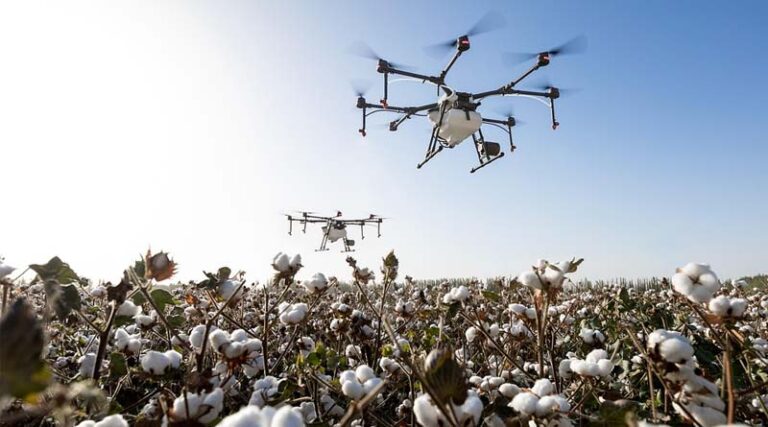
USA EPA Proposes Re-Approval of Drift-Prone Dicamba Herbicide Despite Legal Setbacks
25 July 2025, Washington: The U.S. Environmental Protection Agency (EPA) has announced a new proposal to re-approve three dicamba-based herbicide formulations for over-the-top (OTT) application on genetically engineered (GE) soybeans and cotton. This move marks a significant regulatory development for one of the most contentious pesticides in recent U.S. agricultural history.
Background of Legal and Regulatory Challenges
Dicamba has remained at the center of legal and environmental controversy for nearly a decade. Initially approved for use on GE crops in 2016, the herbicide has since been implicated in widespread drift damage incidents. These include millions of acres of affected non-dicamba-tolerant soybean fields, as well as damage to residential gardens, native vegetation, and federally protected wildlife habitats across the Midwest and Southern United States.
Two separate federal court rulings—in 2020 and again in February 2024—vacated the product’s registration, citing critical flaws in EPA’s risk assessment process and inadequate consideration of off-target impacts. These rulings were the result of litigation brought by public interest and environmental organizations, including the Center for Food Safety, Center for Biological Diversity, National Family Farm Coalition, and Pesticide Action Network. An Inspector General’s report released in 2021 further noted that the agency’s original dicamba approval excluded key scientific evidence and proceeded under political pressure during the first Trump administration.
Changes Proposed in the New Registration Framework
In its current proposal, EPA outlines a revised regulatory framework that notably relaxes several prior restrictions. Among the key changes is the removal of the traditional June 12th cutoff date for dicamba application on soybeans. This allows for year-round application, which many agronomists argue could elevate the risk of volatility during peak growing temperatures. Furthermore, the time-of-day spraying restrictions that were previously included to minimize off-target movement have been eliminated.
In place of these timing measures, EPA has introduced temperature-based restrictions, stipulating that applications must cease once ambient temperatures exceed 95°F. Additionally, the use of volatility reducing agents (VRAs) will be mandated under high-temperature conditions. However, earlier field reports and industry assessments have raised doubts about the efficacy of these agents in real-world conditions.
The agency’s revised proposal also maintains the existing drift buffer requirements from previous registrations, though with some reductions in areas adjacent to endangered species habitats. Critics argue that these buffers have historically proven insufficient in preventing drift incidents and that the reduced zones could pose additional ecological risks.
Concerns over Enforcement and Oversight
Regulatory experts have expressed concern regarding the enforceability of the new guidelines, particularly the temperature-based application restrictions. Unlike fixed calendar dates or specific time windows, temperature enforcement relies on real-time weather data and subjective interpretation by applicators, complicating oversight efforts. Furthermore, the continued reliance on VRAs and unchanged buffer zones may not align with empirical data from previous seasons that documented extensive drift damage despite such measures.
Another point of concern is the timing of the proposal, which closely follows the appointment of Mr. Kyle Kunkler as Deputy Assistant Administrator for Pesticides in EPA’s Office of Chemical Safety and Pollution Prevention. Mr. Kunkler previously served as a policy lead at the American Soybean Association (ASA), an industry group that has strongly advocated for dicamba re-approval, even as soybeans remain the crop most affected by dicamba-related drift.
Regulatory Implications and Next Steps
The re-approval proposal underscores the need for close review by state regulatory agencies, scientific advisory panels, and legal experts. Given the herbicide’s history and the courts’ previous rulings, stakeholders are anticipating further scrutiny, and possibly additional legal challenges, if EPA’s final decision does not demonstrate adherence to robust scientific and procedural standards.
For agricultural regulators, the proposed rule may require updates to state-level application guidelines, drift mitigation protocols, and compliance monitoring frameworks. Public comment on the proposal will be open in the coming weeks, and EPA has indicated that stakeholder input will be considered before issuing final registrations.
Also Read: Seizure of 1 Lakh Fake Fertilizer Bags Sparks National Concern Among Indian Farmers
📢 If You’re in Agriculture, Make Sure the Right People Hear Your Story.
From product launches to strategic announcements, Global Agriculture offers unmatched visibility across international agri-business markets. Connect with us at pr@global-agriculture.com to explore editorial and advertising opportunities that reach the right audience, worldwide.






